Why Do You Need a Lawyer for Wrong Way Car Accidents?
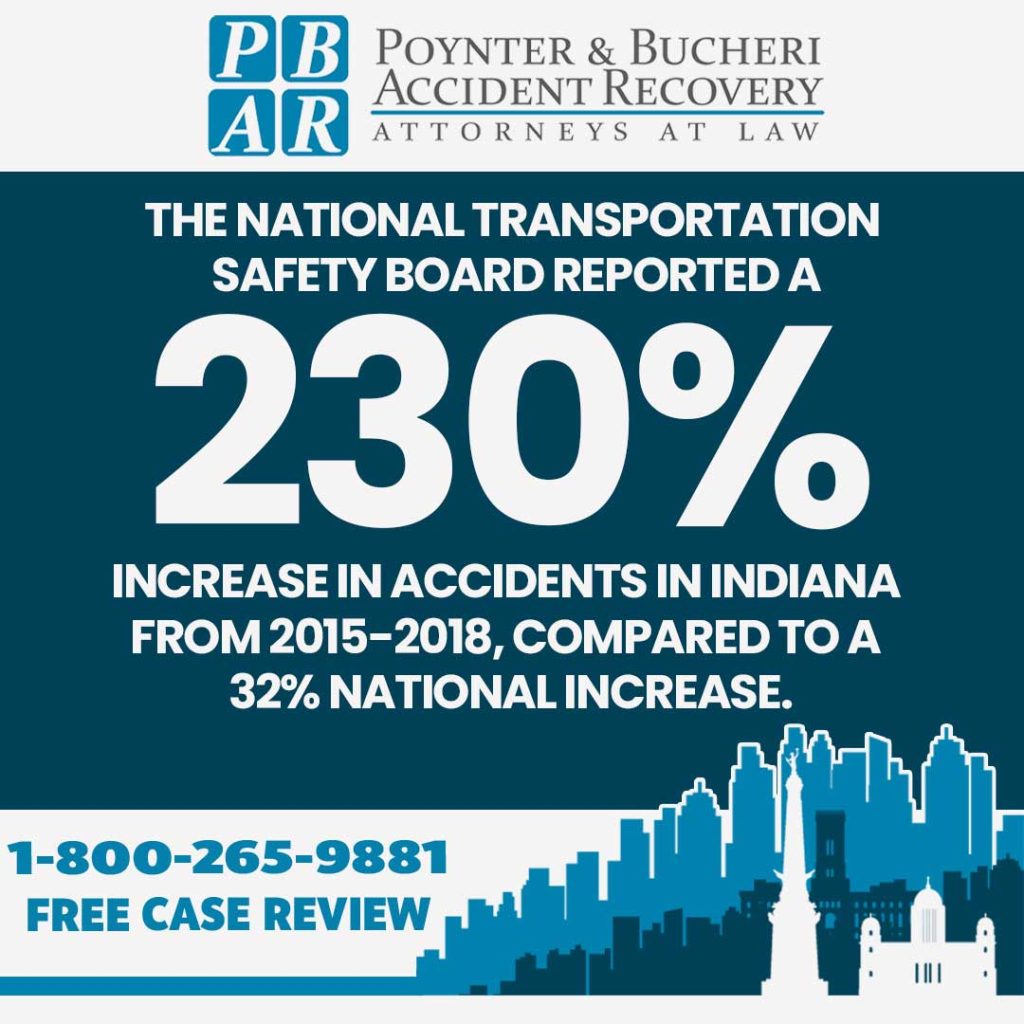
Wrong-way accidents are among the deadliest car and truck accidents due to oncoming traffic and causing head-on collisions.
These accidents can lead to catastrophic injuries, making contacting Indianapolis wrong-way accident lawyers crucial.
The National Transportation Safety Board reported a 230% increase in accidents in Indiana from 2015-2018, compared to a 32% national increase.
Tragically, in most states, wrong-way collisions have killed innocent drivers and passengers.
At Poynter & Bucheri, we have decades of experience holding wrong-way drivers accountable when a wrong-way crash is their fault. Call 1-800-265-9881 for a free consultation.
What Compensation Can I Receive After a Wrong-Way Car Crash?
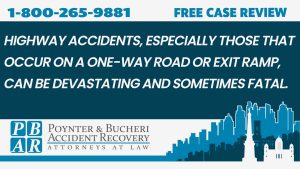
Wrong-way crashes can occur at any time or place, leaving the injured victims with extensive medical bills and lost wages.
Highway accidents, especially those that occur on a one-way road or exit ramp, can be devastating and sometimes fatal.
Wrong-way car accident victims may be entitled to claim compensation when wrong-way drivers crash into them.
Here are the main types of compensation you can receive from wrong-way car accidents:
- Immediate medical costs: This includes emergency room visits, hospital stays, surgeries, and other immediate medical treatments required after the accident.
- Ongoing medical treatment: Compensation can cover follow-up visits, physical therapy, rehabilitation, and other necessary long-term medical care.
- Medication and medical supplies: Costs for prescribed medications, medical equipment, and supplies needed for recovery.
- Lost income & earnings: If you can’t work now or in the future, you can claim compensation for the wages you are unable to earn.
- Vehicle repair or replacement: Compensation for the repair or replacement of your vehicle if it was damaged or totaled in the accident.
- Personal property: Coverage for any personal items damaged or lost in the accident, such as electronics, clothing, or other belongings.
- Physical pain: Compensation for the physical pain and discomfort you endure as a result of the injuries sustained in a wrong-way car accident.
- Emotional distress: Two vehicles colliding at high speed can result in extensive emotional trauma requiring ongoing therapy.
- Impact or loss of relationships: If the car accident negatively impacted your relationship with your spouse or family members, you may be entitled to compensation for loss of companionship, support, and affection.
- Long-term impact: Compensation for permanent disabilities or disfigurements that affect your quality of life and ability to perform everyday activities.
- Funeral and burial costs: If a loved one was killed in the accident, you can receive compensation for funeral and burial expenses.
- Loss of financial support: Compensation for the loss of income and financial support that the deceased would have provided.
- Travel costs: Reimbursement for travel expenses to and from medical appointments.
- Home modifications: The cost of modifying your home if it’s necessary for your mobility and daily living after the accident.
It is essential to work with experienced wrong-way crash lawyers as soon as they occur. Your attorney will prove fault so you receive full and fair compensation.
Call Poynter & Bucheri at 1-800-265-9881 for a free consultation today about your wrong-way car accident.
Common Injuries Resulting from Wrong-Way Driving Accidents
A significant number of wrong-way accidents are head-on and at high speeds, resulting in serious injuries.
The most common injuries sustained in wrong-way accidents include:
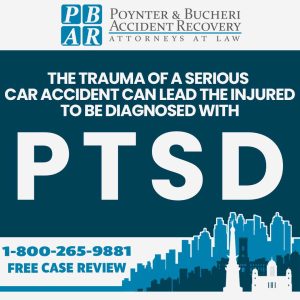
Traumatic Brain Injuries (TBI): The force of a head-on collision can cause the brain to collide with the inside of the skull, leading to TBIs. Injuries range from mild concussions to severe brain damage, resulting in cognitive impairment, memory loss, and changes in personality or behavior.
Spinal cord injuries and paralysis: The high speed and violent impact of wrong-way car accidents can damage the spinal cord, resulting in partial or complete paralysis.
Broken bones: A head-on collision can cause multiple broken bones in the arms, legs, ribs, and pelvis.
Post-Traumatic Stress Disorder (PTSD): The trauma of a serious car accident can lead the injured to be diagnosed with PTSD.
Wrongful death: Compensation may cover funeral expenses, mounting medical bills, loss of income, and grief of losing a loved one.
Other catastrophic injuries: In addition to the above, wrong-way collisions can cause other types of severe injuries, such as internal organ damage, severe lacerations, and burns.
Common Causes of Indianapolis Wrong Direction Accidents
Some crashes are unavoidable, but most are due to some level of driver error, and many are preventable.
The most common causes of wrong-way crashes include:
Impaired Driving
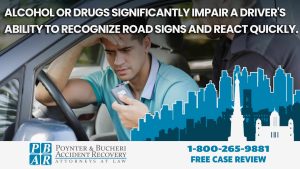
Alcohol or drugs significantly impair a driver’s ability to recognize road signs and react quickly, and they often result in crashes.
When individuals drive under the influence, it’s easy to miss “Wrong-Way” or “Stop” signs.
60% of wrong-way crashes involve alcohol impairment or prescription drug use.
Older Drivers
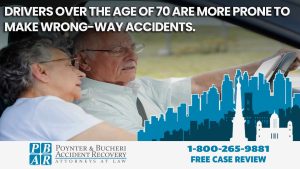
Drivers over the age of 70 are more prone to wrong-way accidents. Vision problems, cognitive decline, and slower reaction times make driving their vehicle at night, dusk, or early morning hours more challenging.
Medical Emergencies
Heart attacks, seizures, strokes, or panic attacks can cause a driver to lose control of their vehicle. They can result in crashes from an ill driver swerving into oncoming traffic or entering a roadway in the wrong direction.
Driving Alone
Drivers who are alone in their vehicles are more susceptible to making critical mistakes and have a higher risk of causing wrong-way accidents.
Distracted Driving
Activities like texting, eating, adjusting the radio, or checking makeup can divert a driver’s attention from the road.
Distracted drivers may miss critical signs indicating the right direction of travel, leading to wrong-way entries.
Poor Weather Conditions
Adverse weather can obscure road signs and lane markings. It is more challenging to navigate the highway correctly, increasing the risk of wrong-way crashes.
Lighted signs help when a motorist drives in poor weather accidents on city streets, country roads, or the highway.
Impatience
Some drivers intentionally go the wrong way to avoid traffic jams or take shortcuts, believing it will save them time. Driving dangerously often results in head-on collisions and severe injuries, as they commit wrong-way driving traffic violations.
Lack of Clear Signs
Inadequate or missing road signs can lead to driver confusion, particularly in rural or less-traveled areas and divided highways.
Confused drivers are more likely to enter roadways or exit ramps incorrectly, leading to wrong-way incidents.
Intentional Acts
Some wrong-way accidents are due to driver negligence or deliberate actions such as illegal U-turns, joyriding, or other forms of reckless wrong-way car driving.
When driving on the wrong side of a highway, one-way road, or other types of controlled access highways, each type of driver error becomes more serious.
If wrong-way drivers have injured you, call our personal injury attorneys at 1-800-265-9881 for a free consultation.
Preventing Wrong-Way Driver Accidents
Attentive driving is the best way to prevent wrong-way accidents, but a few other factors can reduce the frequency and severity of these wrong-way collisions.
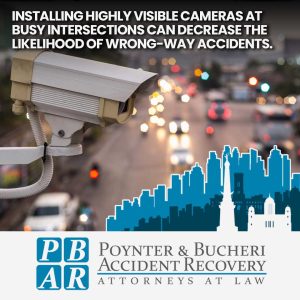
- Improved signage: New signs can help prevent people from traveling in the opposite direction against the traffic flow. Replacing missing signs will also reduce accidents and factors leading to drivers making a wrong turn.
- Better road design: Designing simpler roads can reduce driver confusion and keep every vehicle traveling safer.
- Alcohol ignition interlocks: Devices that prevent cars from starting if the driver is intoxicated can help reduce car accidents.
- Driver awareness: Staying out of the far-left lane and keeping a clear line of sight can help drivers avoid wrong-way collisions.
- Video cameras: Installing highly visible cameras at busy intersections can decrease accidents.
Contact Poynter & Bucheri After Wrong-Way Car Accidents
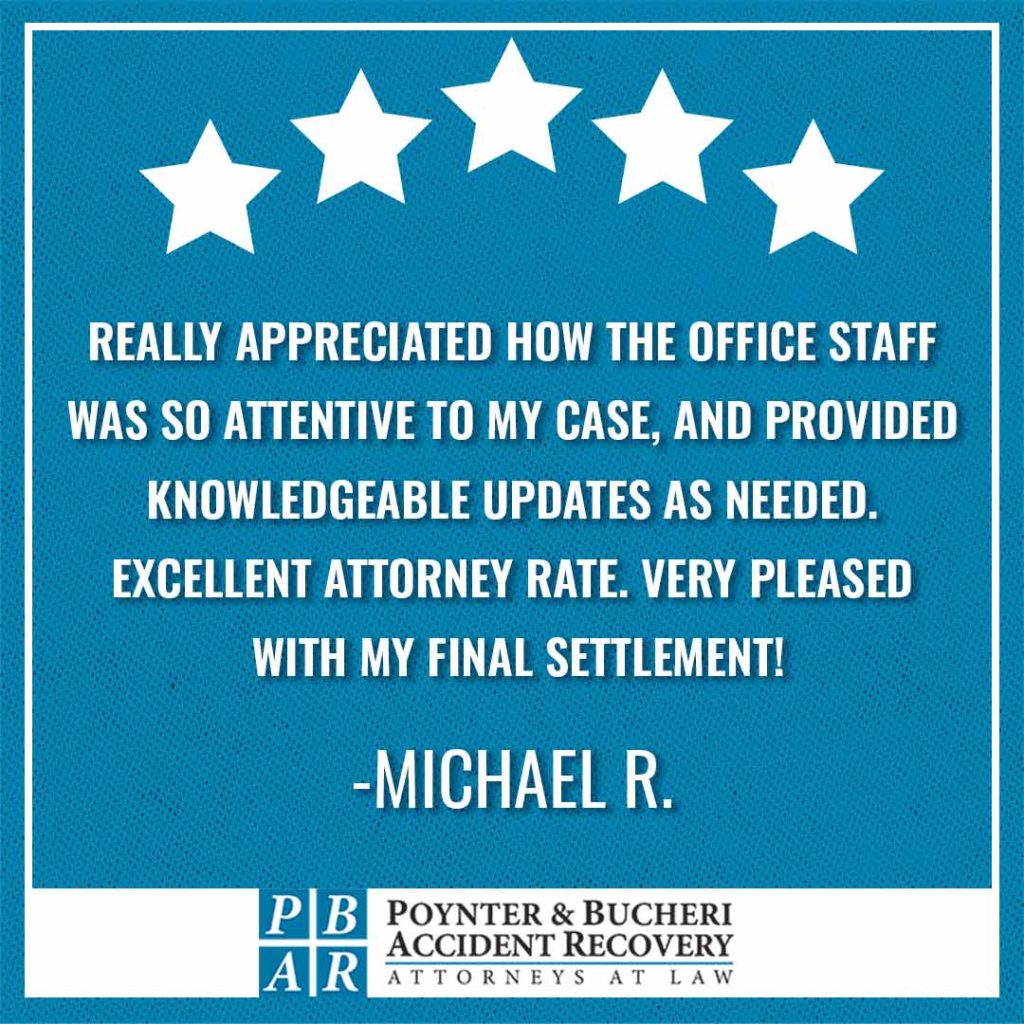
If you or a loved one has been involved in a wrong-way driving accident, you need to get legal representation quickly to collect evidence and identify factors leading to the crash.
Poynter & Bucheri Law Firm has experienced Indianapolis car accident lawyers who will protect your rights and fight for full and fair compensation from the at-fault driver.
You don’t have to handle this alone. Don’t wait to get in touch with our team.
We offer 24/7 free consultations and don’t charge you any fees unless we win or settle your wrong-way driving accident claim.
Contact us online 24/7 or call 1-800-265-9881 to speak with a member of the Poynter & Bucheri legal team who specializes in wrong-way crashes.
